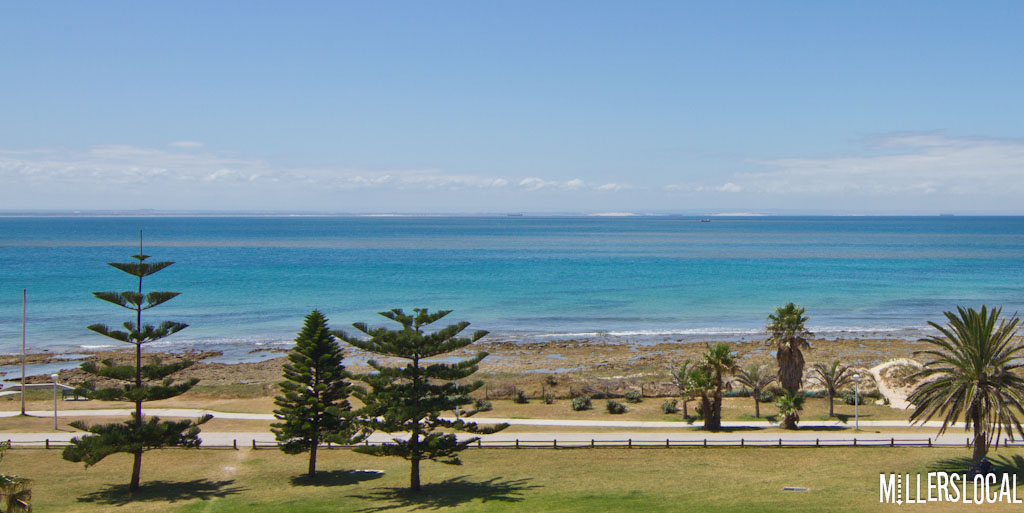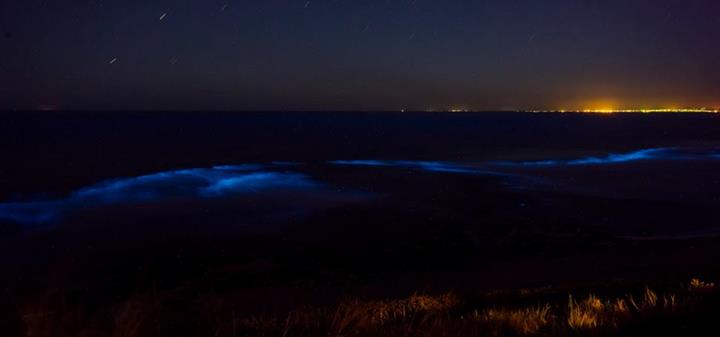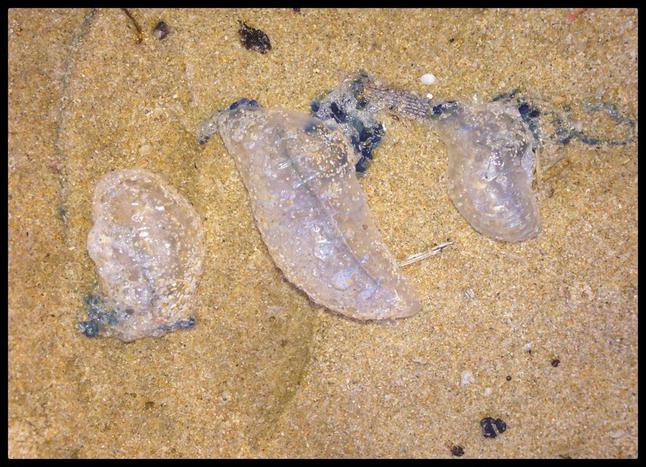|
Beware of colours! If the blue bottles don't get ya, the red tide might. (and on a side note: word is that some of the ou's visiting Casey lately have gone home a bit green.) But back to the critters. Sounds like what everyone had thought was an innocuous algeal bloom might turn out to be a bit more serious than expected. Basically a Red tide is the result of an increased occurrence of some plankton cos of more chow being available. Main culprit is upwelling of cold nutrient-rich water with Mr Plankton in it, which when it lurks about at the surface catching some warm summer rays it goes "yih-hah" and makes hay (or more specifically, plankton) as the sun shines. The usual suspect is a species called Noctiluca. But this current bloom seem a bit more sinister. Samples taken and currently being analysed by NMMU show that this bloom might be Noctiluca AND friends. Problem being is that one of the friends remains anonymous. No-one can work out what he is yet. Good guy? Bad guy? Who knows? Dr Tommy Bornman from the South African Environmental Observation Network (SAEON) has been monitoring the bloom and is still busy with DNA testing. He cautions that although the full array of plankton buddies has not been clarified, the fact that they're such a diverse crowd of lil dudes might be an indicator that it could be toxic. Oh-oh. So, spit not swallow in the surf. Don't eat the shellfish. And surf at night cos the neon-glow from the critters is gonna look super-cool when you hook that big off-the-top. Critter #2 lurking in our bay at the moment are the blue-bottles. Bit of east wind has plonked them into the inshore area and beach. Bit of a challenge cos the warm water means peeps are wanting to trunk it, but that means lots of exposed skin to get yourself stung in your mielie. These ou's sting the crap outta you cos they have cells called nematocysts which are found in the long tentacles that trail behind em. These lil critters screw up your sesh by injecting a protein-based venom into your unsuspecting flesh, which can have varying reactions - none of them good. Firstly it stings like crazy, but if your luck is really out then you also get a nasty allergic reaction. Rule number one is to try avoid getting stung in the first place. It’ll help if you wear a rashie or a T-shirt as it means there’s less open skin area for the terror tentacles to stick to. Plan B – what to do if you do get stung. First off try rinse the tentacles off you using hot water. How hot? They reckon it has to be over 50C to work, that’s about as hot as you can bear. Chances of finding hot water at the beach? Bogger all. So let’s scratch that piece of advice then! Next best thing is to rinse em off using salt water, cos fresh water might actually make the stinging worse. And no, don’t piss on it either! The old wives tale about urine don’t fly, it just isn’t acidic enough. Plain white distilled vinegar like you would find in your kitchen has long been the standard first aid treatment for stings. Its use has been questioned in the last few years and several studies leave us wondering whether vinegar really works. Again, chances of finding vinegar at the beach are also bogger all, unless you get stung at Pipe and you can pop over to Something Good - grab some chips to go with your vinegar too. Just make sure when you rinse that you get those tentacles off. Peel the buggers off. Not with your fingers though! Grab a stick, a shell, use a T shirt over your hand, whatever. Just get those things off else they’ll keep pumping poison into you. Keep an eye out for anaphylaxis. Ana – what?? Anaphylaxis is a severe allergic reaction that can result in hectic itching, shortness of breath, wheezing, tightening of the throat, flushed skin, weakness or dizziness. And if things get real bad you go into shock. If you’re experiencing any of these symptoms make sure a mate gets you to the doc asap. Otherwise if you’re just stinging like hell, pop to the pharmacy and grab some anti-inflamm’s and then stick some ice on it. Moral of the story – don’t get stung, it sucks…well, it stings! Thanks to Dr Shirley Parker-Nance for providing the info about the red tide.
Peter Britz
1/22/2014 08:19:59 pm
Anti-histamines such as "Celestamine" and generics relieve allergic shock reactions like anaphylaxis very quickly. Its supposed to be on prescription but chemists generally will provide a few pills if you are in a bit of strife from a sting. My son who is quite allergic to blue bottles/bees keeps some in the car. Lifeguards are no help as they are not allowed to give you any meds for legal liability reasons, not even a Panado. The Hottentot fig (Carpobrotus), with its triangular leaves, is available on many shores can help to soothe stings if rubbed on the sting. Meat tenderiser and paw-paw skin also contain protein toxin denaturing enzymes.
Peter Britz
1/22/2014 08:42:05 pm
For picture of Hottentot fig - Carpobrotus and more info:
Peter Britz
1/22/2014 08:21:49 pm
While red tides on the East coast are generally non-toxic, we need to be aware the climate is changing. One consequence is a higher frequency of East winds on the East coast which cause upwelling of cold water and with it nutrients to fuel algal blooms like red tide. For example, records show the average water temp at Port Alfred has been lower over the last decade as a result. So "global warming" can cause localised cooling! This, combined with the global increase in the incidence of red tides resulting from 1) increased nutrient pollution (PE sends the treated sewage effluent of the city into the sea) and 2) ships translocating the toxic species of the critters to new places with their ballast water. SO, if we add this all together….this all means that our East coast may indeed be at higher risk of toxic red tide occurrences.
Tommy Bornman
1/23/2014 04:23:24 pm
We've had a first glance at the red tide samples and it would appear that the dominant species is Protoceratium reticulatum. This species is included in the IOC-UNESCO Taxonomic Reference List of Harmful microalgae as it produces yessotoxins (YTX), which may accumulate in bivalves. Effect on humans is still unknown (http://www.marinespecies.org/hab/aphia.php?p=taxdetails&id=110321).
millerslocal
1/23/2014 06:46:25 pm
Thanks for the update Tommy. I'm assuming advise would be to avoid shellfish to be safe rather than sorry given the unknown toxicity. Are deleterious effects only associated with ingestion - or does contact with skin also pose a risk? Comments are closed.
|
AuthorMillerslocal Archives
July 2021
|




 RSS Feed
RSS Feed
